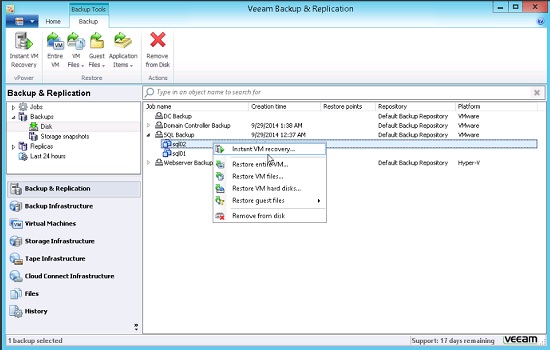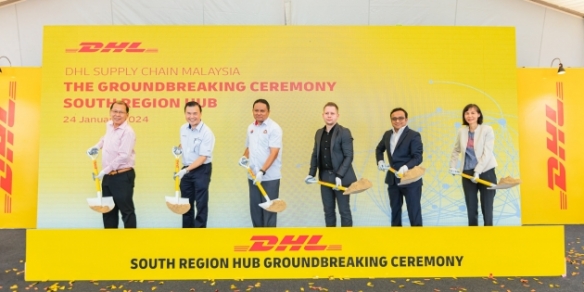Veeam CEO confident of taking on ‘older, slower’ rivals
By Goh Thean Eu June 17, 2015
- They do backup in hours or days, we do it in seconds or minutes, he claims
- Expects to register US$500mil in booking revenue this year

FOR most tech companies, being the new player in a space filled with many established players can be daunting, as these competitors would likely have built a strong brand, as well as a strong relationship with customers.
For Veeam Software cofounder and chief executive officer Ratmir Timashev (pic above) however, being a new player in the virtualisation space means it can, without legacy technology weighing it down, develop solutions that meet today’s business requirement.
“Our backup solution is very advanced. It is very different compared with the legacy backup products from traditional vendors like Symantec, CommVault, IBM and Hewlett-Packard,” the outspoken Timashev told Digital News Asia (DNA) in Kuala Lumpur recently.
“It’s different because the legacy backup solutions were developed 20-30 years ago. Back then, business requirements were very much different.
“Five years ago, one could live without email for a day or a few days. Today, employees and partners need access to data from any place, from any device, at any time,” he argued.
In order to achieve this, as well as to stay competitive, companies are investing heavily in modernising their data centres.
However, such ‘modern’ data centres cannot be efficient if they are still running on “legacy backup solutions,” countered Timashev.
“With legacy backup solutions, you can recover applications, or data, within hours or days. That doesn’t address today's business needs. Our solution, which is fully leveraged with virtualisation, is built to recover data within seconds and minutes – not hours or days,” he confidently claimed.
Veeam Software was established in 2006 by Timashev and his cofounder Andrei Baronov. The privately-held company specialises in backup, disaster recovery and virtualisation management software for VMware’s vSphere and Microsoft’s Hyper-V virtual environments.
Veeam (pronounced ‘Vee-Em,’ as in VM or virtual machine) does not provide backup and recovery solutions for other virtual environments.
US$1bil revenue by 2018

The company plans to grow its revenue to US$1 billion by 2018, a goal which Timashev believes is realistic. This will be done by growing its customer base, as well as getting its existing customers to buy more.
For its first quarter (Q1) ended March 31, 2015, Veeam Software said that booking revenue jumped 22% against the same period a year ago. It also reported, in a statement posted on its website, that it now has over 145,500 customers worldwide, after adding 10,800 new customers during the quarter.
Timashev said that the Baar, Switzerland-based company expects to register US$500 million in booking revenue this year, although this wasn’t in the financial statement above.
While he believes that such a “great financial performance” makes Veeam Software one of the fastest growing software companies of all time, and that its competitors “are afraid of Veeam,” one has to wonder why it is still not the No 1 player in this space.
“In technology, it takes a long time for enterprises to switch, especially in the area of backup. This is because people are always afraid and have the mind-set that ‘if it works, do not touch it’,” he said, when asked why.
Another reason why Veeam Software is not at the top of the heap is because most of its competitors, which have been in the industry for many years, have a huge revenue base – mainly thanks to their income from maintenance and licence renewals.
“If you look at the number of new licences alone, we are already close to them,” said Timashev maintained.
The Asia Pacific mistake
 Still, Timashev (pic) admitted that his company made one big mistake in its game-plan for Asia Pacific. “Asia Pacific – except for Australia and New Zealand – we are under-invested, so we are fixing the problem this year.”
Still, Timashev (pic) admitted that his company made one big mistake in its game-plan for Asia Pacific. “Asia Pacific – except for Australia and New Zealand – we are under-invested, so we are fixing the problem this year.”
As part of its renewed Asia Pacific game-plan, Veeam Software has decided to make Malaysia an ‘inside sales hub,’ responsible for most of the region with the exception of China, Japan, Singapore, New Zealand and Australia.
The company generate sales via inside sales agents and field agents. Inside sales agents are responsible for selling solutions to customers, mainly smaller-sized customers and partners, via phone. Field agents sell the solutions via face-to-face interactions with customers or partners.
“We consider Malaysia a good market, and that’s why we are making large investments in the Kuala Lumpur (KL) sales operations,” Timashev said. “There’s also a good pool of talent here.”
The move to set up its inside sales hub in KL is also aimed at growing the under-penetrated Asia Pacific business.
Currently, it has 6,000 customers in the region, of which 300 are in Malaysia. This is a small amount if one factors in the 3,000 partners (distributors and resellers) it has in the region.
“Currently, about 35% of our revenue comes from the United States and Canada; about 45% comes from Europe; and Asia Pacific only contributes 8%. We want to increase our focus in this region,” said Timashev.
Related Stories:
Acronis sees an Asian future for its backup solutions
Network virtualisation and VMware’s quest for the holy grail
The incredible strangeness of being Serguei Beloussov
CA Tech arcserve launches new unified data protection platform
For more technology news and the latest updates, follow us on Twitter, LinkedIn or Like us on Facebook.


